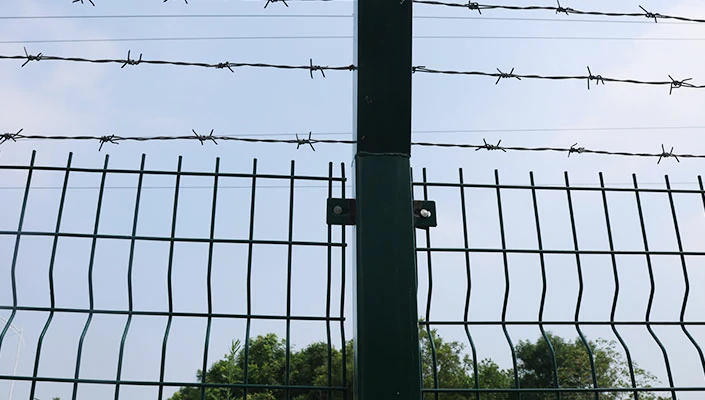wire netting
Wire Netting An Overview of Its Applications and Benefits
Wire netting, also known as wire mesh or wire fencing, is a versatile material that has gained immense popularity across various industries and sectors. Composed of interconnected wires woven together to form a grid or mesh, wire netting comes in a range of sizes, materials, and coatings, catering to a myriad of applications. This article provides an overview of wire netting, its benefits, and its diverse uses in different fields.
Composition and Types
Wire netting is typically made from steel, stainless steel, or galvanized iron, allowing it to resist rust and corrosion. Depending on the specific requirements, the wire can be treated with additional coatings, such as PVC, to enhance durability and aesthetic appeal. The mesh sizes can vary significantly, from fine mesh suitable for small animals to larger openings designed for security purposes.
Applications
1. Agriculture One of the most common applications of wire netting is in agriculture. Farmers use it to create enclosures for livestock and protect crops from pests. The strong yet flexible nature of wire netting allows for easy installation and maintenance, making it an essential tool in modern farming.
2. Construction In the construction industry, wire netting is often employed as reinforcement for concrete structures. Welded wire mesh is used to provide additional strength and stability, ensuring the longevity of buildings, roads, and other infrastructure projects.
3. Safety and Security Wire netting is widely utilized in safety applications, such as fencing around properties, playgrounds, and sports fields. It serves as a physical barrier to keep intruders out and ensure the safety of children and pets. Additionally, wire mesh can be found in security systems, such as enclosures for transformers and other vulnerable equipment.
wire netting

4. Industrial Uses Industries frequently depend on wire netting for filtration and separation processes. For instance, it is used in the manufacturing of screens for sieving materials and in water treatment plants for filtering out impurities. The robustness of wire mesh makes it ideal for handling heavy loads and demanding environments.
5. Art and Decoration Beyond practical applications, wire netting has also found its way into the world of art and design. Artists and designers leverage the aesthetic quality of wire mesh to create sculptures, decorative panels, and unique architectural features. The transparent nature of wire netting allows light to filter through, creating stunning visual effects in various settings.
Benefits
The advantages of wire netting are numerous. Its durability is one of its most significant benefits; wire mesh can withstand harsh environmental conditions, making it suitable for both indoor and outdoor applications. The flexibility of wire netting allows for easy customization, enabling users to tailor it to their specific needs and requirements.
Wire netting is also cost-effective. Its long lifespan and minimal maintenance needs mean that once installed, it can serve its purpose without incurring high ongoing costs. Additionally, the lightweight nature of wire mesh makes it easy to transport and install, further reducing labor costs.
Conclusion
In conclusion, wire netting is a multifaceted material that serves an essential role in a variety of fields, including agriculture, construction, safety, industry, and art. Its combination of strength, versatility, and cost-effectiveness makes it a favored choice for many projects. Whether providing security, enhancing structural integrity, or contributing to artistic expression, wire netting continues to be an invaluable asset across contemporary applications. As innovation progresses, it will be exciting to see how wire netting evolves and finds even more applications in the future.
-
Weather Resistance of Woven Wire and Chicken Wire Fencing MaterialsNewsJun.05,2025
-
Umbrella Nails Innovations in Roofing Fasteners for Wind ResistanceNewsJun.05,2025
-
Modern Barbed Wire Fence Designs for Perimeter ProtectionNewsJun.05,2025
-
How Iron Nail Wire Enhances Nail Strength and Installation EfficiencyNewsJun.05,2025
-
High-Security Razor Fence Solutions for Perimeter ProtectionNewsJun.05,2025
-
Durable Wire Netting Fence Solutions for Animal EnclosuresNewsJun.05,2025




